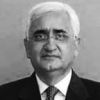8 forest officers hurt in crossfire
In a heavy exchange of fire between forest officials and timber smugglers, eight forest officials were injured, two critically, at a forest in Gadchiroli on Wednesday evening.
In a heavy exchange of fire between forest officials and timber smugglers, eight forest officials were injured, two critically, at a forest in Gadchiroli on Wednesday evening. One timber smuggler was killed in the incident. Acting on a tip-off, a team of forest officials combed the Zinganur Rameshgudsam forest area under Sironcha taluka of the Gadchiroli district for Sagun tree smuggling, a forest officer said on condition of anonymity. “There were around 30 to 40 forest officials, but some of them had taken a good lead of 10 to 15 kilometres from the rest of the team. The smugglers were seen chopping wood and loading them on bullock carts when the forest officials intercepted their activity. However, the smugglers, around 50 to 60 in number, overpowered the officials and beat two of them mercilessly,” said the officer. He added that assistant conservator of forests D.B. Jiddewal and forests range officer B.B. Sirboyna were badly beaten up, and the rest of the team that later reached the spot was greeted with firing. “The officials opened fire in retaliation and killed a smuggler. The duo was admitted in the Rural Hospital, Sironcha, and later referred to Nagpur,” added the officer. There was resistance from the villagers and the body of the slain smuggler was taken away by them. However, the police has got the custody of the body, said the forest officer, adding that the post-mortem is underway. The official also informed about the sorry state of affairs in the region, where these conflicts are becoming a regular affair. “It is a Naxal-hit belt and so the police hesitates in travelling to these areas. Using weaponry is also not an option as the police avoids it due to the area’s sensitivity. It is difficult to fathom who’s a villager and who’s a Naxal. There was a similar incident on February 14, when two forest guards were beaten up,” said the officer. It is a very difficult situation in terms of guarding the forests and the state government has been a mere spectator, the officer said.
